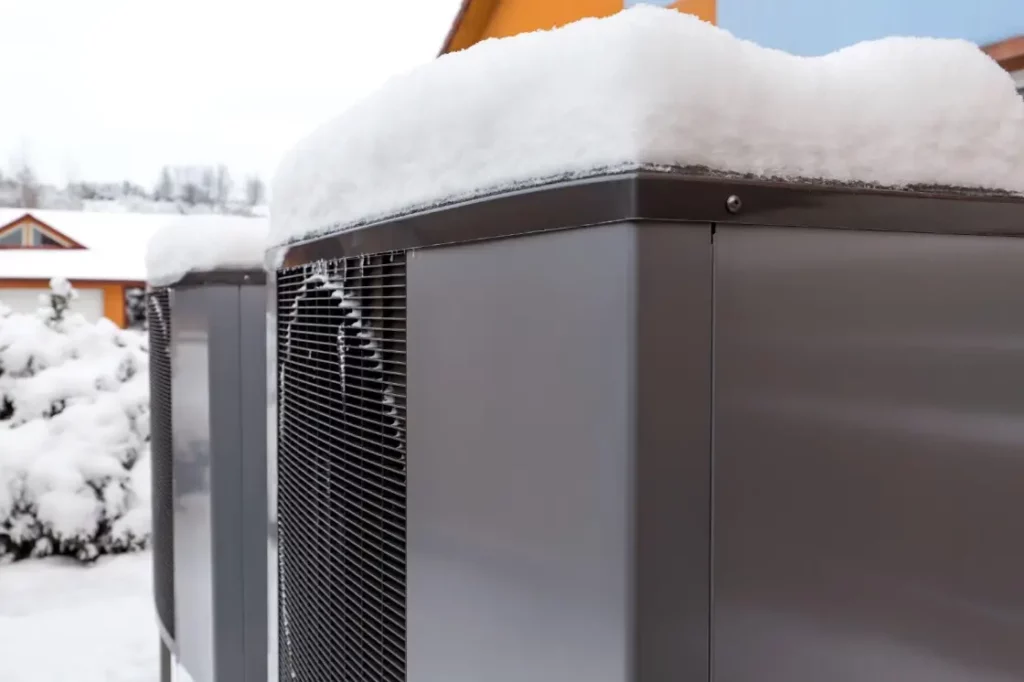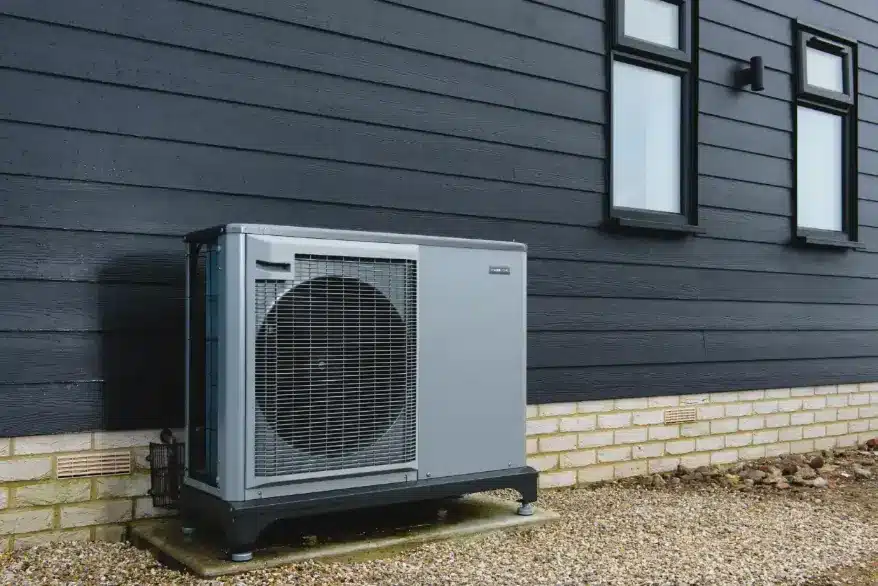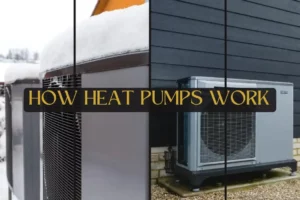As Canadians seek more efficient and eco-friendly heating solutions, heat pumps have emerged as an attractive alternative to traditional forced air furnaces. These devices utilize innovative technology to provide both heating and cooling, making them an excellent choice for the diverse Canadian climate. In many regiona, various levels of government are offering grants to help shift change towards more efficient and sustainable means of heating and cooling.
In this article, Barrie’s own Custom Comfort ClimateCare demystifies the workings of heat pumps, breaking down the technical aspects into simple terms for those considering the big switch.
Understanding the Basics

At its core, a heat pump is like a magic box that can manipulate heat to keep your home comfortable, regardless of the season. It achieves this by transferring heat from one place to another, rather than generating it from scratch like a traditional furnace.
Refrigeration Cycle
The heart of a heat pump’s operation lies in a continuous cycle known as the refrigeration cycle. This cycle is composed of four main components: the evaporator, compressor, condenser, and expansion valve.
- Evaporator: The heat pump starts by absorbing heat from the air or ground outside your home using a refrigerant. Think of it like a sponge soaking up heat from a surface.
- Compressor: Once the refrigerant has absorbed heat, it is compressed by the compressor. This compression raises the temperature of the refrigerant, making it ready to release heat.
- Condenser: The hot, compressed refrigerant then releases its heat into your home’s air or water supply through the condenser. It’s like the radiator in your car, but it’s heating your home instead.
- Expansion Valve: After releasing its heat, the refrigerant is expanded through the expansion valve, which lowers its temperature and prepares it to start the cycle anew.
- Reversible Operation: One of the fascinating aspects of heat pumps is their ability to work in reverse. This means that during the summer, they can act as air conditioners by taking heat from your indoor air and expelling it outside.
Types of Heat Pumps
There are three primary types of heat pumps commonly used in Canada:
- Air Source Heat Pumps (ASHP): These systems absorb heat from the outdoor air, making them suitable for regions with moderate winters like southern Canada. They work efficiently down to about -15°C, but their performance may drop in extremely cold conditions.
- Ground Source Heat Pumps (GSHP): Also known as geothermal heat pumps, these systems harness heat from the earth’s relatively stable temperature, typically through underground loops. GSHPs are highly efficient but can be more expensive to install due to the ground loop infrastructure.
- Ductless Mini-Split Heat Pumps: These are versatile systems that consist of an outdoor unit and one or more indoor air handlers. They are ideal for homes without ductwork and can provide zoned heating and cooling.
Core Benefits of Heat Pumps

- Energy Efficiency: Heat pumps are highly efficient, with some models delivering up to 300% efficiency, meaning they can produce three times more heat energy than the electrical energy they consume.
- Environmentally Friendly: By transferring heat instead of burning fossil fuels, heat pumps produce fewer greenhouse gas emissions, making them an eco-friendly heating and cooling option.
- Long-Term Cost Savings: Over time, heat pumps can save homeowners on energy bills, especially when combined with government incentives and rebates.
- Year-Round Comfort: Heat pumps provide both heating and cooling capabilities, ensuring comfort throughout the year.
Potential Drawbacks of Heat Pumps
While heat pumps offer numerous advantages, they are not without their disadvantages, particularly in the context of Canadian climate conditions. It’s essential to consider these drawbacks when evaluating whether a heat pump is the right choice for your heating and cooling needs in Canada:
- Reduced Efficiency in Extreme Cold: In extremely cold regions of Canada, especially during the peak of winter, air source heat pumps (ASHPs) may struggle to maintain their efficiency. As the outdoor temperature drops significantly below freezing, the heat pump’s ability to extract heat from the air diminishes, resulting in reduced heating capacity and potentially higher energy bills.
- Initial Investment: Heat Pumps have far higher initial investment costs, often 3x the cost of a high-efficency furnace. While they offer excellent long-term efficiency, the upfront costs can be prohibitive for many homeowners. That said, in much of Canada, various government-level subsidies and grants exist to help new buyers make the transition.
- Outdoor Unit Noise: The outdoor unit of an ASHP or ductless mini-split heat pump can produce a humming noise. This may be a concern in quiet neighborhoods or homes with nearby bedrooms. However, newer models tend to be far quieter than older ones.
- Regular Maintenance: Heat pumps, like all HVAC systems, require regular maintenance to ensure optimal performance. This can include cleaning or replacing filters, checking refrigerant levels, and inspecting components, which can add to the cost of ownership.
- Specialized Installation: Proper installation of heat pumps, especially GSHPs, requires specialized knowledge and equipment. Hiring a qualified installer is crucial to ensure the system works efficiently and reliably.
- Reduced Cooling Efficiency in Winter: If you use a ductless mini-split heat pump for both heating and cooling, the cooling efficiency may be reduced during the winter months, potentially leading to higher cooling costs. It doesnt mean it stops working, just that it becomes less efficient.
Incentives to Shift
There are several grants and incentives available to encourage the adoption of heat pumps as an energy-efficient heating and cooling solution. These programs aim to reduce greenhouse gas emissions, lower energy consumption, and promote sustainable living. The specific grants and incentives vary by province and territory, as well as by the type of heat pump system being installed.
Generally, Canadians can access financial support through federal initiatives like the Canada Greener Homes Grant, which provides up to $5,000 for energy-efficient home upgrades, including heat pumps. Additionally, many provinces and municipalities offer their own programs, such as rebates, tax credits, or low-interest loans, to further incentivize the installation of heat pumps.
These grants not only help homeowners reduce their carbon footprint but also make the transition to more efficient heating and cooling systems more affordable. It’s essential for Canadians interested in heat pump incentives to research and consult local authorities to maximize the benefits available in their area.
While heat pumps offer many core benefits, including energy efficiency and environmental friendliness, they do have disadvantages in the Canadian context, particularly in regions with harshest of winters. It’s essential to assess your specific climate, budget, and heating needs before deciding whether a heat pump is the right choice for your home.
Whether you opt for an air source, ground source, or ductless mini-split heat pump, you can enjoy improved energy efficiency, lower environmental impact, and year-round comfort in your home. Make sure to consider consulting with a qualified HVAC professional to determine the most suitable heating and cooling solution for your location and preferences.
Conclusion
In the quest for more efficient and sustainable heating solutions, heat pumps are gaining traction among Canadians looking to move away from forced air furnaces. Understanding the basic principles of how heat pumps work, their types, and the benefits they offer can help homeowners make informed decisions about transitioning to this innovative technology.
Whether you opt for an air source, ground source, or ductless mini-split heat pump, you can enjoy improved energy efficiency, lower environmental impact, and year-round comfort in your home.
